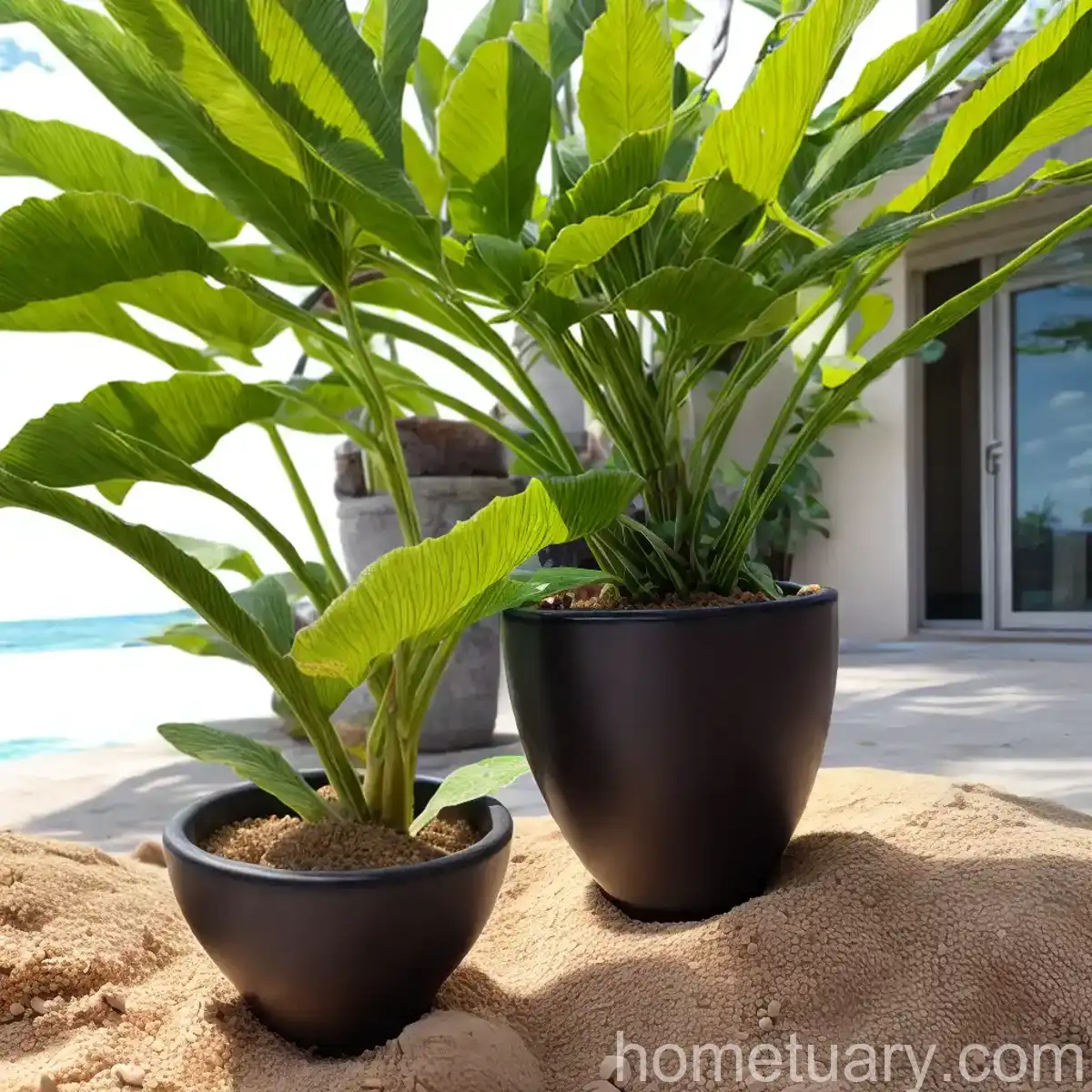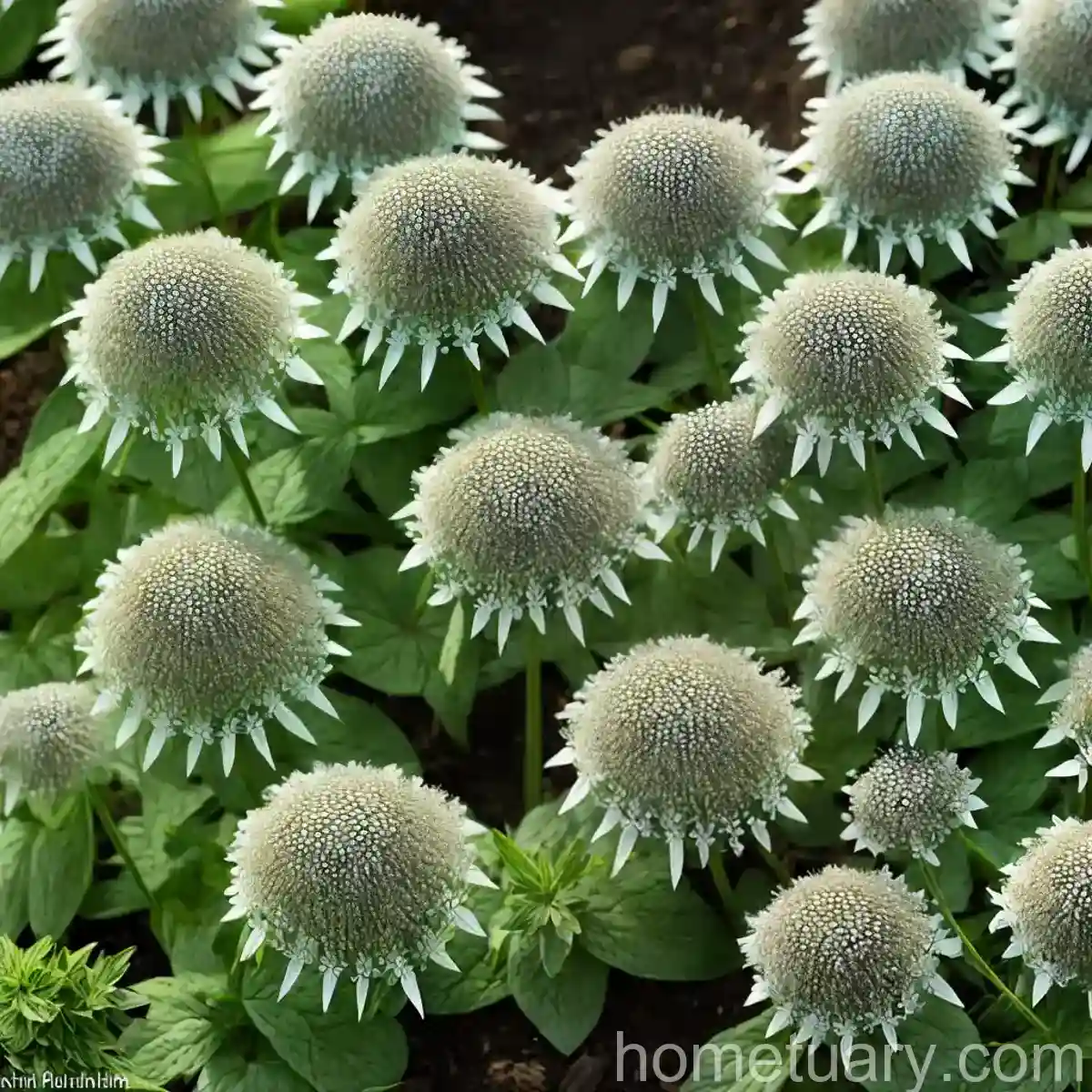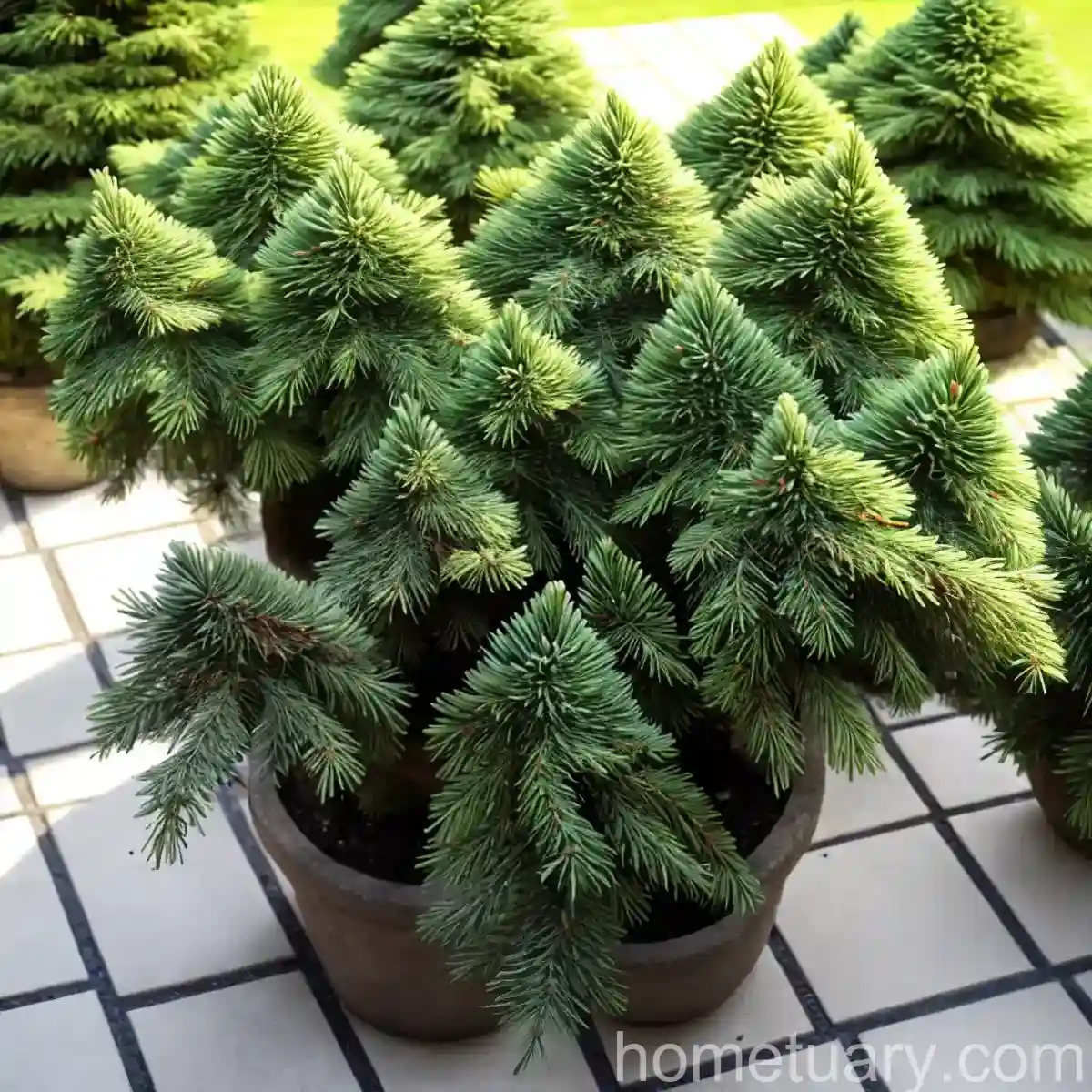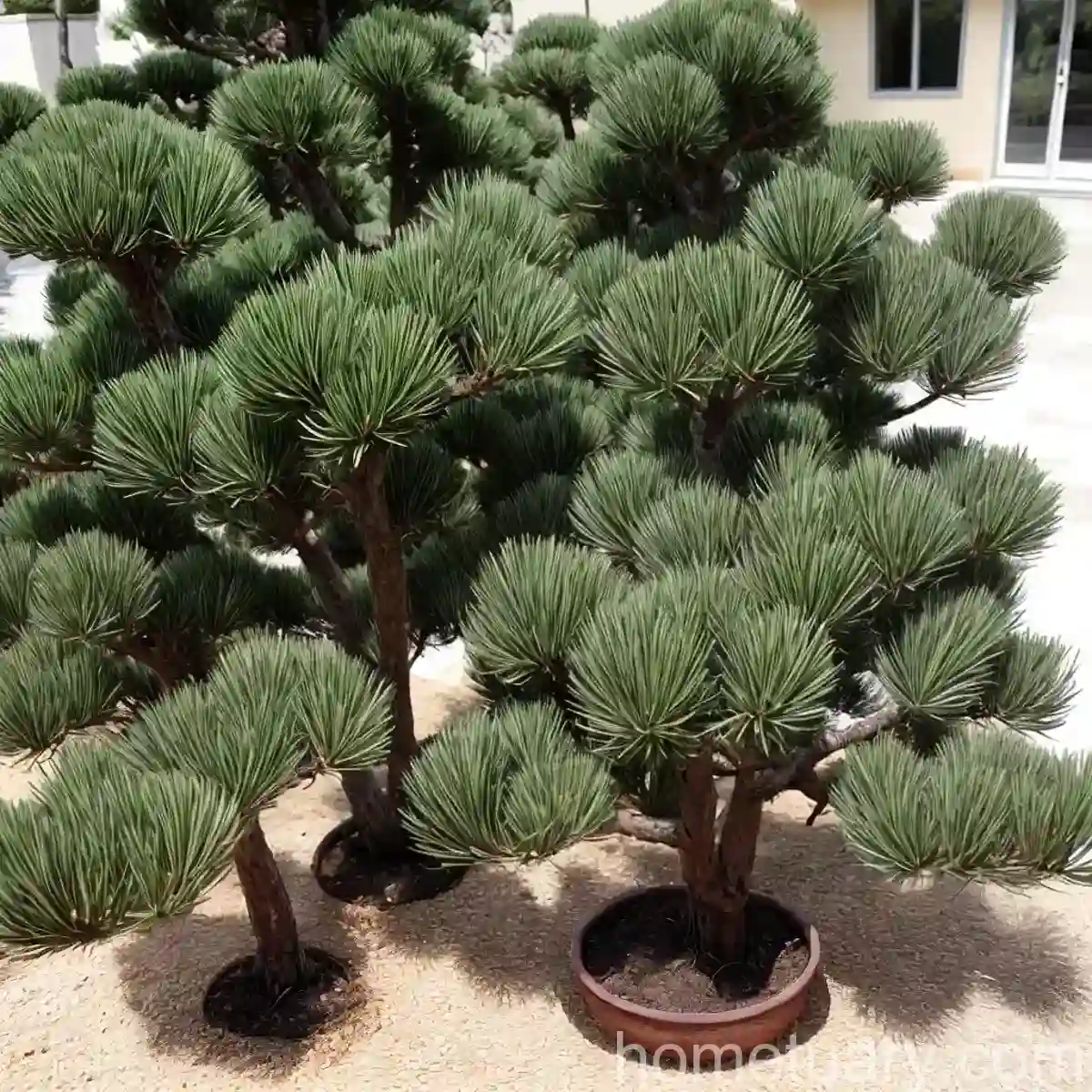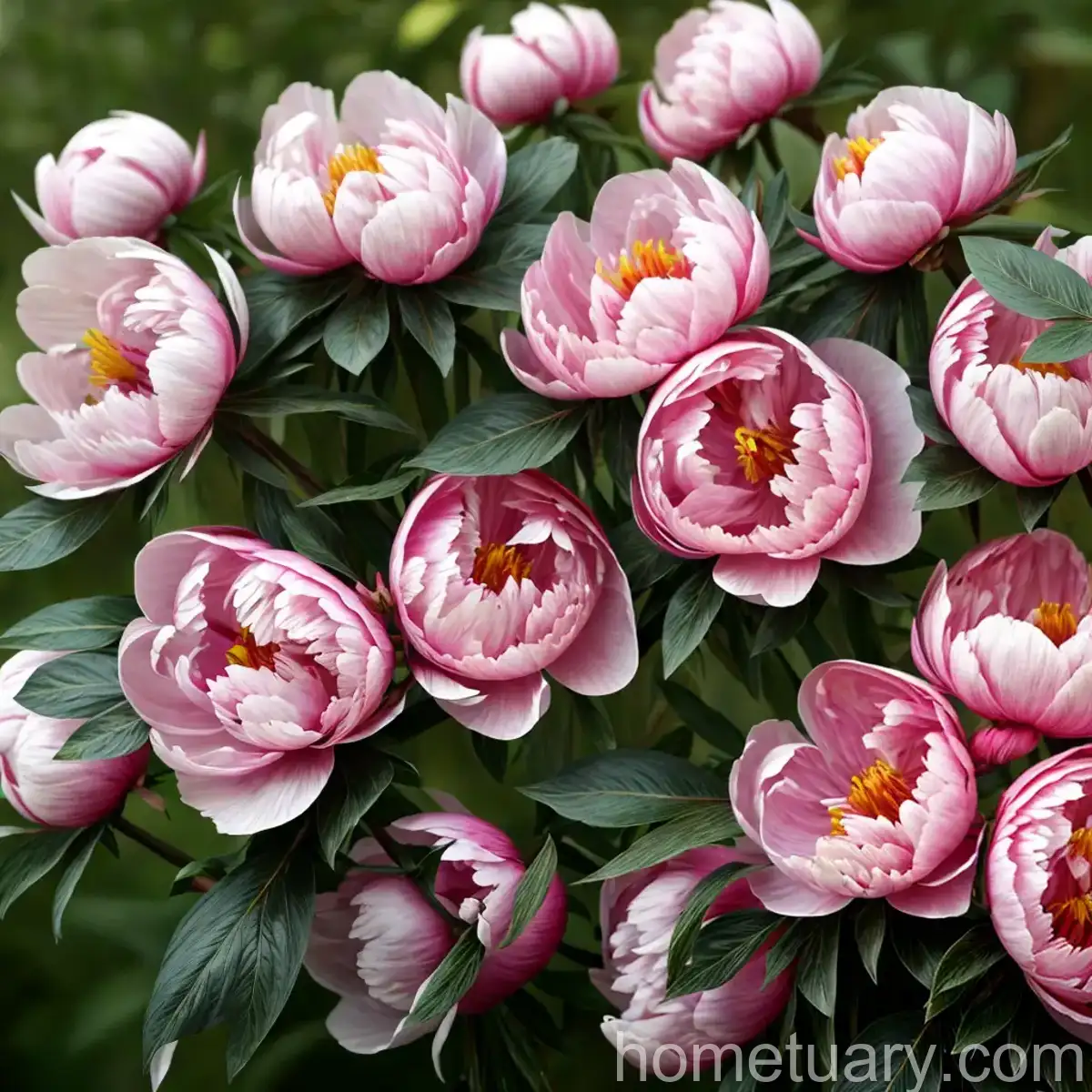Japanese Black Pine (Pinus thunbergii ‘Monina’ MAJESTIC BEAUTY)
What is a Plant?
Plants are multicellular organisms belonging to the kingdom Plantae. They encompass a diverse range of species, from tiny mosses to gigantic trees. Plants have a crucial role in the Earth’s ecosystem, as they are the primary producers, utilizing sunlight for photosynthesis to convert carbon dioxide and water into organic compounds, providing sustenance for themselves and other organisms. In addition, they play a critical role in maintaining the balance of atmospheric gases, soil structure, and the water cycle. The subject of our focus is the Japanese Black Pine, scientifically known as Pinus thunbergii ‘Monina’ MAJESTIC BEAUTY.
Key Takeaways – Japanese Black Pine (Pinus thunbergii ‘Monina’ MAJESTIC BEAUTY)
- Scientific Name: Pinus thunbergii ‘Monina’ MAJESTIC BEAUTY
- Common Name: Japanese Black Pine
- Family: Pinaceae
- Genus: Pinus
Culture
Japanese Black Pine is a striking evergreen conifer renowned for its elegant, irregular growth habit and dark, brooding foliage. This tree is notably resistant to salt spray, making it a suitable option for coastal locations. It is treasured for its architectural form and the atmospheric character it adds to the landscape.
Uses
The Pinus thunbergii ‘Monina’ MAJESTIC BEAUTY is extensively used in landscaping for its distinct beauty and resistance to coastal conditions. It can be utilized as a specimen tree or in groups for landscape accents and windbreaks. Its adaptability to pruning also makes it suitable for bonsai and topiary.
Water
This pine species prefers well-drained soil and is relatively drought-tolerant once established. While it requires regular watering during the initial establishment period, it becomes more resilient once its root system has matured. However, it is crucial to ensure the soil does not become waterlogged, which can lead to root rot and other issues.
Sunlight
The Japanese Black Pine thrives in full sunlight, which promotes optimal growth and enhances the deep green hue of its foliage. It should be planted in locations with exposure to direct sunlight for the majority of the day.
Fertilizer
Fertilization is typically not necessary for Japanese Black Pine if it is planted in fertile soil. However, in cases where the soil is lacking in nutrients, a balanced fertilizer specifically formulated for evergreens can be applied in the spring.
Soil
Pinus thunbergii ‘Monina’ MAJESTIC BEAUTY prefers slightly acidic, well-draining soil. It is essential to avoid waterlogged conditions, which can lead to root rot. Hence, soil with good drainage is recommended for its cultivation.
Pruning
Pruning can be utilized to accentuate the natural form of the Japanese Black Pine or to maintain its size and shape. Regularly removing dead or diseased branches and trimming it to encourage an open habit can ensure the tree remains healthy.
Propagation
Propagating the Pinus thunbergii ‘Monina’ is commonly achieved using seeds or hardwood cuttings. Propagation by seeds entails stratifying the seeds by chilling them to break dormancy. Hardwood cuttings are taken in late autumn or early winter and should be treated with rooting hormone before being placed in a propagation medium.
Container Popularity
The flexibility of the Japanese Black Pine makes it suitable for container cultivation. Its adaptability to pruning enables it to thrive as a container plant, making it an excellent choice for individuals with limited garden space or those interested in creating a portable landscape element such as a bonsai.
Common Diseases
Japanese Black Pine is generally resistant to pests and diseases. However, it may occasionally be affected by certain issues. Being aware of common diseases and their symptoms is essential for maintaining the health and vigor of this species.
Disease Diagnosis
Some potential diseases that can impact Japanese Black Pine include:
- Pine Wilt: Caused by the pinewood nematode, pine wilt can lead to the wilting and death of the tree. Infected trees may exhibit browning and wilting of needles, as well as dieback of branches.
- Rust Diseases: Several rust diseases can affect pines, causing yellowing or browning of needles and the formation of rust-colored pustules on the needles or stems.
- Needle Blights: Various fungi can lead to needle blight diseases, which result in the browning, wilting, and premature shedding of needles.
Common Pests
- Pine Sawfly: The larvae of the pine sawfly can defoliate trees if present in large numbers, weakening the tree and impacting its overall health.
- Pine Moth: The larvae of certain moths can infest the Japanese Black Pine, consuming its needles and affecting its aesthetic appeal.
Botanist’s Tips
- Regular inspection and maintenance are essential to detect and address any potential issues promptly.
- Optimal growing conditions, including proper sunlight, water, and soil, help enhance the tree’s resistance to pests and diseases.
- Selecting disease-resistant varieties can further reduce the risk of disease.
Fun Facts
- The Japanese Black Pine is native to coastal areas of Japan and Korea, where it can withstand the harsh conditions of wind and salt spray.
- Its distinctive bark becomes deeply furrowed and plated as the tree matures, adding to its visual appeal.
- This species is highly regarded in Japanese gardens for its symbolic significance and aesthetic value.
For more information, you can refer to the following resources:
– Royal Horticultural Society – Pinus thunbergii ‘Monina’
– University of Florida IFAS Extension – Japanese Black Pine
By delving into the intricacies of the Japanese Black Pine, we can gain a deeper understanding of its care needs and aesthetic value, while also appreciating its cultural significance and resilience in various environments. Whether used as a landscaping focal point, a bonsai subject, or a coastal windbreak, this magnificent tree continues to captivate and inspire with its unique charm and grace. We hope this comprehensive exploration has provided valuable insights for those seeking to cultivate and admire the majestic beauty of Pinus thunbergii ‘Monina.’









